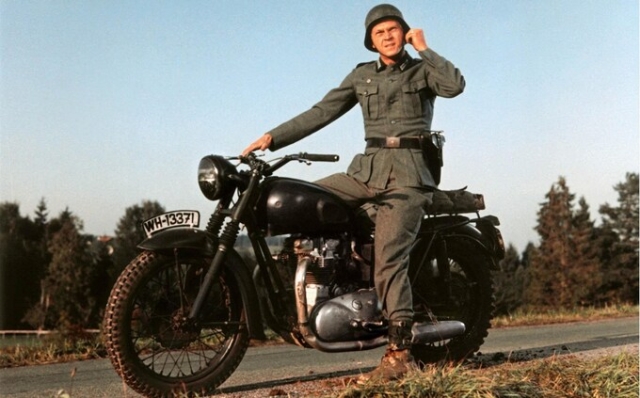 Steve McQueen in The Great Escape. Author: Alamy
Steve McQueen in The Great Escape. Author: Alamy
In the first minutes of the Great Escape, the «commandant» (Hannes Messemer) of the Stalag Luft III POW camp warns Captain Ramsey (James Donald) against attempting to escape. Ramsey's rabble of captured Allied airmen are prolific, well-known fugitives, but the commandant wants a quiet life. Ramsey, however, has none of this. As a high-ranking British prisoner of war, he bluntly tells the commandant: «To try to escape is the sworn duty of all officers.» Jerry's The Great Escape tone is an indomitable spirit that sways to the beat of its whistling theme song.
The film, which is now 60 years old, is a stunning, undeniable classic. This is what public holiday afternoons were made for—masculinity, schoolboy courage, and belly-shooting audacity. The Great Escape is also well known for its blatant, Hollywood-friendly fiction, best exemplified by Captain Steve McQueen Virgil Hilts, a completely fictionalized motorcycle rebel. Starring alongside McQueen is a group of POWs based on real or fictional events: Richard Attenborough's mastermind; the near-blind forger of Donald Pleasence; talkative outlaw James Garner; and the claustrophobic digger Charles Bronson. The «Great Escape» is reminiscent of a robbery and prison break.
However, for the most part, it is a very accurate retelling of how 76 prisoners of war fought their way out of Stalag Luft III in March 1944. According to historian Guy Walters, author of The Real Great Escape, this is the wrong tone.
In truth, there was no obligation to run. There may have been an expectation that POWs would try to do so—and a God-given right to have a good time—but no real obligation. In addition, senior prisoners of war were repeatedly warned not to attempt a mass escape. And not only because the German guards wanted a quiet life — because the consequences would be dire. And indeed they were.
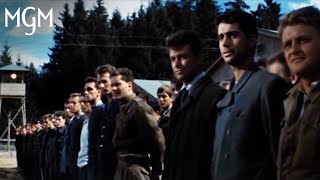
Only three of the 76 runaways hit a home run. The rest were caught. Fifty of them — on the direct orders of Hitler — were killed by the Gestapo. In the film, even this tragic end has a tinge of glory. “People need to understand that the story of the Great Escape is much darker than what the movie shows,” says Guy Walters. “At its core, this is a story about recklessness and murder.”
The Great Escape is based on the book of the same name by Paul Brickhill, an Australian pilot, prisoner of war and writer. Brickhill, who also wrote The Dam Busters, was shot down over Tunisia and sent to Stalag Luft III in April 1943.
Reports often describe the camp as escape-proof. It is true, as stated in the film, Stalag Luft III was built specifically to accommodate Allied airmen. Located near Sagan in Lower Silesia (then Nazi Germany, now Poland), it was run by Luftwaffe officers and took serious measures to prevent escape. Undeterred, some Allied airmen, calling themselves «Organization X», went ahead with their plan to dig three tunnels codenamed «Tom», «Dick» and «Harry» from under their barracks.
The operation was led by South African-born pilot Roger Bushell, also known as «Big X», who became the basis for Richard Attenborough's character, Bartlett. Paul Brickhill participated in the operation but did not participate in the escape. Bushell banned Brickhill from escaping due to bouts of claustrophobia.
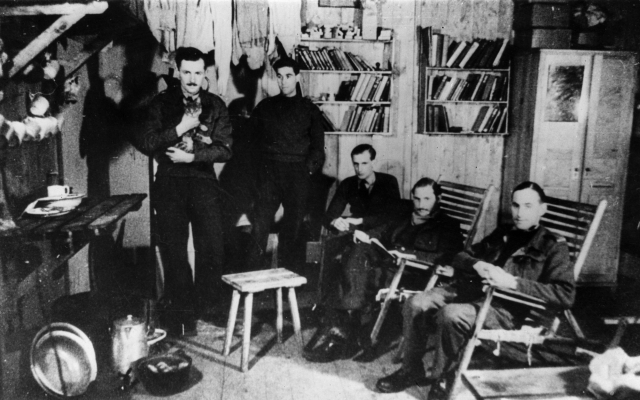 Prisoners of Stalag Luft III, circa 1943. Photo: Getty < p >Brickhill's book was published in 1950. Director John Sturges read the story the following year and immediately saw the cinematic potential. “It was the perfect embodiment of why our side won!” he later said. Sturges himself was a veteran who made documentaries for the US Air Force during World War II.
Prisoners of Stalag Luft III, circa 1943. Photo: Getty < p >Brickhill's book was published in 1950. Director John Sturges read the story the following year and immediately saw the cinematic potential. “It was the perfect embodiment of why our side won!” he later said. Sturges himself was a veteran who made documentaries for the US Air Force during World War II.
He was also the leading action director of his day and spent over a decade trying to make The Great Escape. As described in Glenn Lovell's biography of Sturges the Escape Master, the director originally pitched the film to MGM's Sam Goldwyn. «What the hell is this escape?» Goldwyn said. «No one leaves!» Sturges' assistant director, Robert E. Relier, said the same thing: «It's about a group of guys in a POW camp who end up being executed. It's hard to sell.”
Besides, it would be expensive and it wouldn't have female characters. “We don't have a single woman,” Sturges said. «They have no place in this story.»
Following the success of The Magnificent Seven—another masculine ensemble led by Sturges and starring Charles Bronson, James Coburn, and Steve McQueen—Mirish's company gave the green light to The Great Escape. But Sturges had to convince another key man: Paul Brickhill. The author resisted offers to sell the rights. Brickhill didn't want this story to turn into a Hollywood romp full of Stars and Stripes glory.
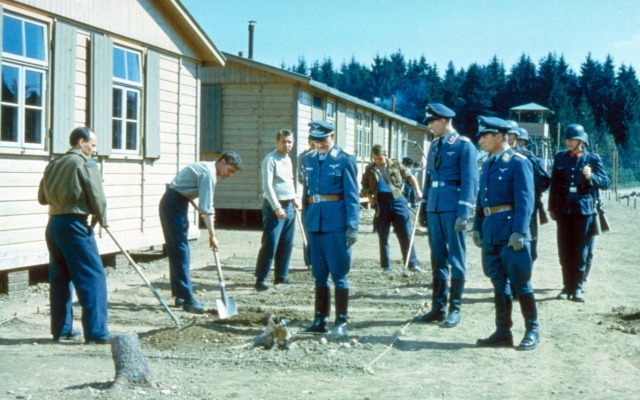 Scene from The Great Escape Credits and rights: Alami
Scene from The Great Escape Credits and rights: Alami
Sturges met with Brickhill and convinced him using Hollywood chatter, a gift of mink gloves, and a promise to stay true to the real events. Brickhill also requested permission from the families of the fugitives. But the script was still in development for two years, with 11 drafts and over half a dozen writers (Harry—the tunnel through which the airmen escaped—took about a year, including a break during the winter months).
Despite assurances that they would stick to real events, both Sturges and the film's producers wanted to include American stars in the film. And Steve McQueen's character, Hilts, with his baseball glove and don't-a-monkey charm, couldn't be more American. Nicknamed «The Cool King» (for how much time he spends in solitary confinement), Hilts is definitely cool. It is true that the Americans participated in the early stages of the tunneling operation, but by the time they escaped in March 1944, they had been transferred to another camp within the camp.
Anyway, there should be more information in the movie. nationality. “It was a multinational effort,” says Guy Walters. “Only 50 percent of the fugitives were British or Commonwealth members. There were Lithuanians, Poles, Czechs… whatever.”
Among the more faithful characters is Richard Attenborough's Bartlett, based on Bushell. (Richard Harris was originally selected but dropped out.) «Attenborough captured that steeliness,» Walters says. “To begin with, he is a cold and stern figure. What I don't think it captures is that Bushell was pretty arrogant. He pushed a lot of people away. He was rather pompous and reckless.»
Indeed, Walters' book criticizes Bushell for promoting an operation that was «unwise, doomed, dangerous, and unnecessary to the war effort.»
In the film, the point of escaping is not just to escape, but to «confuse and confuse the enemy», i.e. to force the Nazis to waste valuable resources on their hunt, draw forces from the front line, and hurt the Nazis in general. This was part of Bushell's reasoning when planning the escape, and is often repeated as a fact.
 Cart used to build ' ;Harry' tunnel in Stalag Luft III, Poland. Photo: PA
Cart used to build ' ;Harry' tunnel in Stalag Luft III, Poland. Photo: PA
Walters calls it «bullshit». A mass escape would simply force the Nazis to increase security, find fugitives, and in the process find people fleeing other places in the Third Reich. “And free of charge for their war effort,” says Walters.
The warnings of the German guards were born out of a genuine concern for the welfare of prisoners of war. “The German guards repeatedly warned Bushell and senior officers,” Walters says. “A mass escape would make the Nazis so angry that the retribution would be terrible – so don’t do it. They were told if you were going to run, run in twos and threes. The German guards told them about it out of friendliness.”
The film captures the relationship between prisoners of war, known as the Kriegs, and the guards — a kind of heartfelt understanding that escape is a kind of game.
p>
«The German invaders were in their forties or fifties and the POWs were all young men,” Walters says. “There were school, good-natured relationships such as father and son. Many German guardsmen and officers had fought in the previous war and had children of the same age. This was not Auschwitz. In general, the Germans treated prisoners of war quite well.
John Sturges planned to film The Great Escape in California, but problems with the Extras Guild forced them to look elsewhere. Instead, the film was filmed at the Bavaria Film Studios in the Geiselgasteig, near Munich. «Guess what Germany looks like?» Robert Reliea told Sturges after he found the place. “It looks like Germany!”
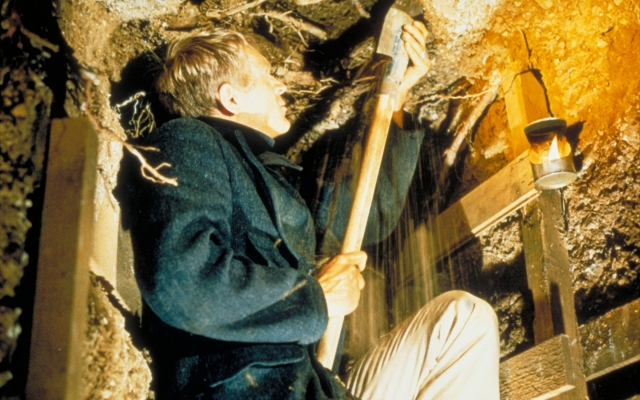 Steve McQueen in The Great Escape. Author: Alamy
Steve McQueen in The Great Escape. Author: Alamy
A copy of Stalag Luft III was built next to the studio. Donald Pleasence called it «a replica of a POW camp, and just as frightening.» Pleasence definitely knew what he was talking about — he was a radio operator/air gunner in the RAF during World War II. Shot down over France in August 1944, the Pleasance saw off the war with Stalag Luft I on the Baltic Sea. With the help of technical consultant Wally Fludy, the Canadian pilot who dug the tunnels in the real Great Escape, cross-sections of Harry were built on the studio soundstages.
The digging itself is accurately depicted. As Bartlett describes, Harry was dug 30 feet and over 300 feet long (actually 344 feet) from the cabin on the northern lot and into the surrounding forest (Harry came out of cabin 104, not 105 as shown in the movie). In fact, the «trap» (or entrance) for Harry was set up under the stove; in the film, it is under the toilet drain. Actually it was a trap for Dick. The drainage, however, was an ingenious idea and worth showing in the film: it could be covered and filled with water so that the diggers could stay underground and unnoticed while the drainage was running normally.
Harry's engineering is also close to real: slats from POW beds used to support the tunnel (indeed, the Krieg slept uncomfortable), improvised air pumps and carts on wheels. There were also «halfway houses» — resting points along the tunnel — nicknamed «Piccadilly» and «Leicester Square». Techniques were borrowed from other POW escapes.
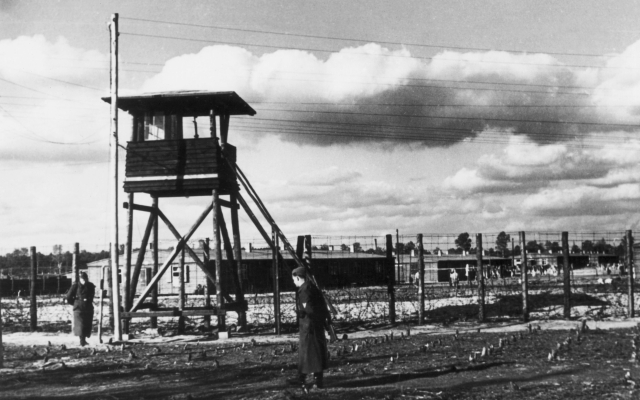 Stalag Luft III in 1942. Credit & Copyright: Getty
Stalag Luft III in 1942. Credit & Copyright: Getty
What is not depicted — understandable for a 1963 war picture — is that due to sweat and dirt, the diggers worked naked. Due to poor diets and quirky constitutions, they had to dig through each other's excrement. “It wasn't a joke to have someone's stomach spinning down there in the tunnel,” explained Ken Reese, Welsh Wing Commander.
In the film, members of Organization X disperse the dirt of the tunnel by wearing small pouches hidden under their trousers, which release the dirt from the bottom of their legs onto the ground. It was one of several methods used. Other POWs developed a system of wearing two trousers with mud crammed into the inner trousers and thrown to the ground, or stuffed with rolled up towels and then discarded as they unrolled the towels to sunbathe. According to Walters, they made about 18,000 dispersed trips. In fact, there was so much sand in the gardens of Krigis that the German guards began looking for possible tunnels.
The film also reveals the X Organization's guard deception system — almost a production line of distractions, secret signals, and cover stories. “If a German showed up in any part of the camp,” Walters says, “within ten seconds, the guys in the tunnel knew about it through the repeat message system.” Even some of the fugitives didn't know Harry's exact location until late at night.
The film missed the fact that only about a third of the Stalag Luft III prisoners wanted to escape. «Two-thirds were like, 'I've done my job, I'm safe behind this barbed wire, I don't want to get on a plane again,'» Walters says. “You have to remember — almost every person in this camp has been in a plane crash. Getting on a plane again was a terrifying prospect. They saw their friends fall to their deaths. They saw how people were burned alive in the cabins.
It's not exactly in the spirit of the do-or-die movie, which plays out like a jolly old caper as they collect fake documents, disguises, maps, and other items. The real Organization X modified the uniforms, towels, sheets and clothes sent through the Red Cross. They also forged documents and made a printing press out of jelly. But not everything was up to the mark. The passes failed scrutiny, leading to some of the Great Fugitives being caught on the run.
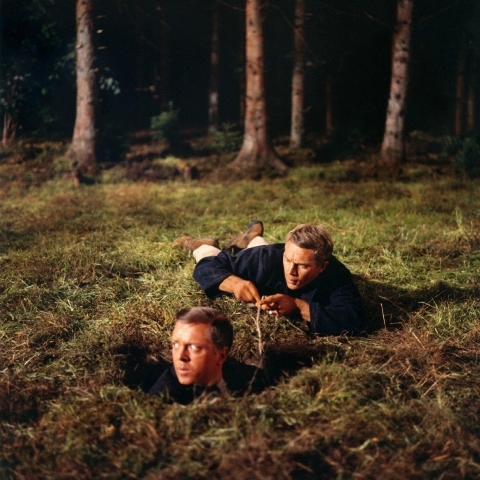 Richard Attenborough and Steve McQueen in The Great Escape. Author: Alamy
Richard Attenborough and Steve McQueen in The Great Escape. Author: Alamy
The film also underestimates Germany's aid. Walters calls the real escape «the greatest Anglo-German collaboration since the wedding of Queen Victoria and Prince Albert». In the film, charismatic swindler James Garner bribes gullible security guard Werner (Robert Graf) to acquire key items. Of course, the members of Organization X, who were well endowed with gifts sent by the Red Cross, used bribery and blackmail. “Some Germans smoked two cigarettes a day, POWs smoked 10,” Walters says. «If you are five times richer than your guards, you will be.»
Other German guards, some of whom were anti-Nazi, were willing to help, supplying the Kriegs with goods and intelligence. «There were Germans who forced their wives to print fake documents,» says Walters.
Production of the film — like the real «Great Escape» — was marred by bad weather, which was one of several reasons why the budget has grown. from just over $2 million to $4 million. There was another problem: Steve McQueen.
Six weeks into filming, Sturges showed the cast daily footage. According to Donald Pleasence (who thought the film was like a turkey), McQueen ran out. He was unhappy with his role and demanded a rewrite. McQueen was particularly annoyed by co-star James Garner for taking better material and coming across as a bigger star. McQueen went AWOL and refused to return to production.
Garner and James Coburn (playing an Australian POW) met with McQueen to discuss how they could enhance Hilts' character. But McQueen rejected all ideas. “Steve wanted to be a hero, but he didn’t want to do anything heroic,” Garner recalled. Sturges threatened to cut McQueen out of the film entirely, and McQueen called his agents. They brought in a screenwriter to work on McQueen's scenes. The character was a loner, that's the point — sitting alone, throwing a ball at the wall and saying «I wouldn't do it for my own mother» when the British ask him for help. But rewriting the script made it an integral part of the operation.
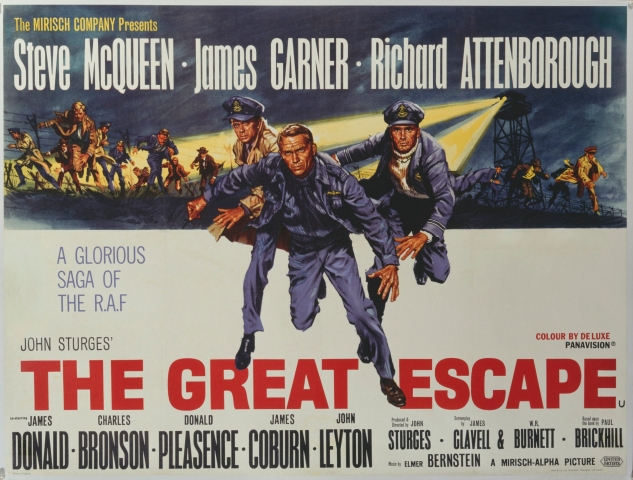 Original poster for John Sturges' The Great Escape. Credit & Copyright: Moviepix
Original poster for John Sturges' The Great Escape. Credit & Copyright: Moviepix
McQueen also caused problems on the roads in Munich. Accounts of McQueen's high-speed gags vary. McQueen's biographer Mark Eliot details how the actor got 37 tickets and wrapped the car around a tree. Actor Tom Adams went even further and stated that McQueen «wrote six or seven cars». Other actors were also reported to have raced down the Munich roads, but McQueen was the fastest. “We stopped a lot of your friends this morning, Herr McQueen,” said a police officer in one funny story. «But I have to tell you that you won a prize.»
According to Eliot's biography, the film studio's lawyers had to work overtime to keep McQueen out of jail. They resorted to telling German officials that if McQueen was locked up, production would stop, meaning no money for the local economy.
McQueen wasn't the only actor to provide behind-the-scenes drama. As detailed in Glenn Lovell's The Escape Master, Charles Bronson had an affair with Jill Ireland, the wife of co-star David McCallum. Ireland suffered a miscarriage when McCallum returned to London. Assistant director John Flynn described how Bronson sat by her bed and «was on top of her like an animal» once she recovered.
The real Great Escape took place on the night of March 24-25, 1944. In a re-creation of the film, it's an enjoyable evening. In fact, the conditions were «fucking cold,» Walters says. “The prisoners escaped wearing hopelessly unsuitable clothes for walking on snow, ice, icy mud, slush, manure, etc.”
A scene from The Great Escape. Image Credit & Copyright: Alamy
In the film, McQueen sticks his head out of the tunnel and finds they are 20 feet from the forest, leaving them open to nearby watchtowers as they make their way outside. It did happen, a detail that was given a dramatic twist in Brickhill's book and embellished in subsequent retellings. “It didn't seem like a big deal at the time,” Walters says. «They were still at a considerable distance from the watchtower, and there was snow on the ground.»
There is a stroke of luck in the film's retelling when an air raid turns off all the lights, allowing several POWs to escape the tunnel under the cover of darkness. There was indeed a raid, but due to a blackout, the fugitives trying to find their way through the trees encountered difficulties — some of them got lost. This created problems inside the tunnel as well, which was plunged into darkness.
There were also cave-ins caused by too many fugitives trying to squeeze through. Others panicked and forgot to send the cart back and drag the next person through, leading to more delays and chaos. Two hundred people were selected to escape, but only 76 managed to get out. “Within 24 hours, most of them surrendered or were caught,” says Walters. «For obvious reasons, they were hopelessly ill-prepared.»
The scenes after the escape in the film are the most fantastic. Trying to escape the country, disguised prisoners of war jump off a train, hijack a plane and, of course, try to jump the German-Swiss border on a stolen motorcycle.
The motorcycle chase, entirely fictional, was added at McQueen's suggestion — a way to show off your skills and most likely a means to appease your fragile celebrity ego. But McQueen wasn't allowed to make the iconic jump himself. Instead, McQueen's buddy (and stuntman) Bud Ekins performed both a jump and a barbed wire slide, a maneuver that got Hilts caught again.
However, Robert Reliea recalled that McQueen and Tim Gibbs, a motocross rider who was invited to do some of the bike tricks, also performed the jump for the camera. Although Ekins makes the jump in the film, Relier claimed that it could have been any of them. McQueen, who was a better motorcyclist than the German stuntmen, also played the Nazi soldier in the episode, so he was effectively chasing himself on the motorcycle. when Garner and Pleasence crash a stolen plane (another fictitious detail) in a field, cutting one of its wings clean. Reliea, who had a pilot's license, was caught in the cockpit during the crash. From the blow, he lost consciousness and was injured.
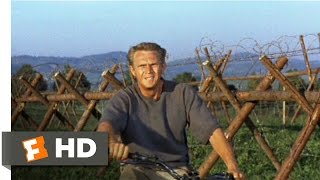
One of the film's most famous moments comes shortly after, when Bartlett and Mac (Gordon Jackson) are caught again after an English slip. They try to get on the bus posing as French, but the Gestapo officer tricks Mack into speaking English. «Good luck,» the Nazi says, to which Mac replies «thank you.» The scene is based on what could have happened. According to a Gestapo officer's report, Roger Bushell and his partner, a Frenchman named Scheidhauer, were arrested when one of them answered «yes» instead of «wee». If this really happened, says Walters, it seems plausible that Bushell made a mistake. «Which of these two men is more likely to answer in English?» asks Walters.
In the film, the three men who escaped to freedom — an Australian, a British man and a Pole — are characters played by James Coburn, John Leighton and Charles Bronson. In fact, the three successful escapees were the Norwegians Jens Müller and Per Bergsland and the Dutchman Bram Vanderstock.
If the tone of The Great Escape is wrong, it is best shown in the climax, when Bartlett and other newly captured POWs are rounded up and taken (presumably) back to the camp. After getting a moment to stretch his legs, Bartlett states that digging the tunnel «kept me alive» and «I've never been happier». At this point, they are shot. But still triumphant. What really matters is their defiance in the face of evil.
The actual killings were even more frightening. After Hitler gave the order to kill most of the fugitives, the head of the Kripo looked through the names of those caught and decided which of them to kill. The Gestapo officers would then drive off those caught in pairs or small groups under the pretext that they were being taken back to the camp. On the way, they were offered to pee or taken out into the field, after which the Gestapo shot at them from behind. Then false claims were made and the bodies were cremated. “So they shot Bushell,” says Walters. “And he was badly shot. He writhed on the ground and had to be shot again. It's incredibly unworthy — it's repulsive, it's terrible. If the film had ended like this, people would have left the cinema with different feelings.
In the film The Great Escape, which premiered in London on June 20, 1963, the events are mythologized. The film — even just the theme of «tears in the eyes» — is laced with moving, moving splendor.
For Guy Walters, the events are remembered because of the terrible end. Indeed, there were other escapes that are less remembered. He points to the escape of 65 prisoners of war from the Oflag VIIB at Eichstätt in June 1943. “There were other major escapes from other camps,” Walters says. “There were more important escapes than the Great Escape. Why are we interested in this? Ultimately, The Great Escape is a murder story. Escape is not the only one. Murder is unique.”
Guy Walters gives tours of Stalag Luft III and Colditz in October. Read more here




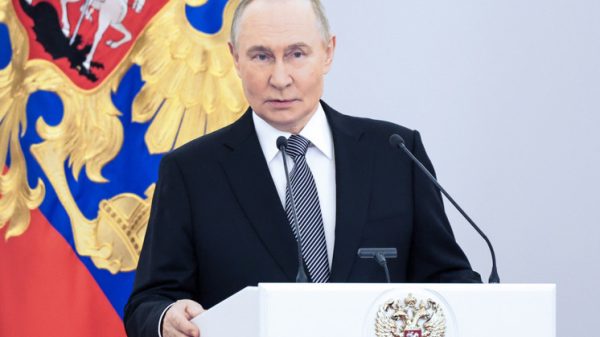


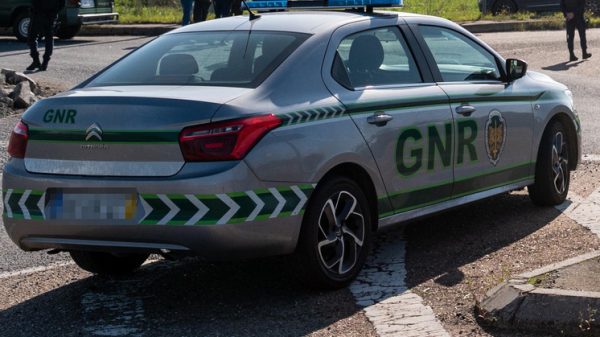

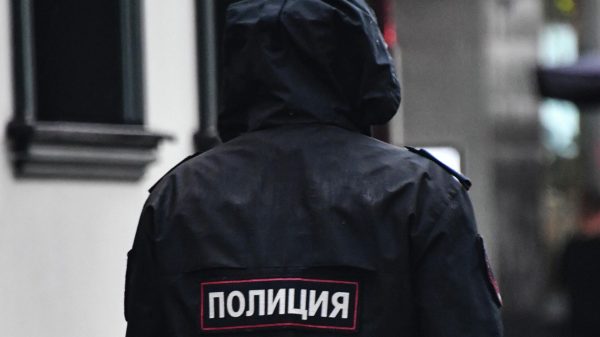
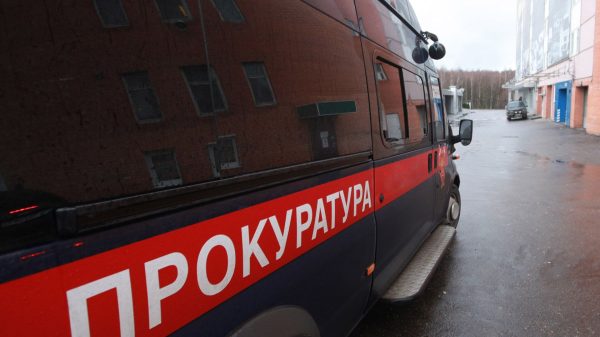



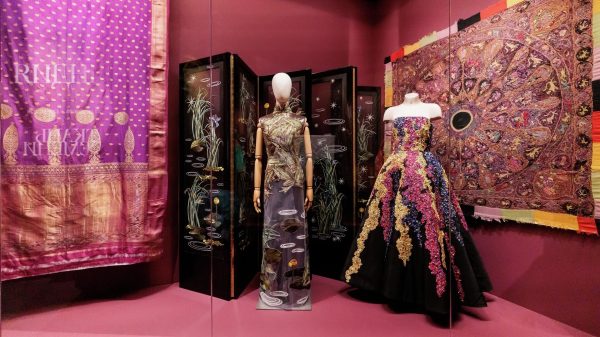
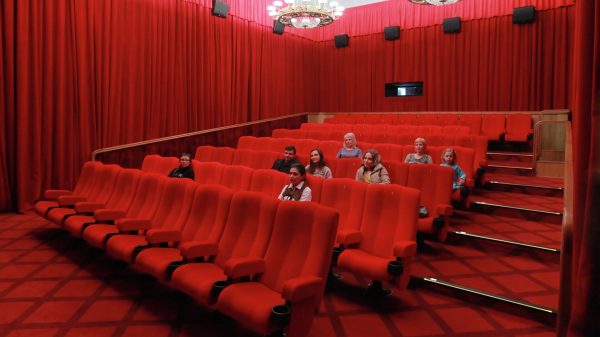





































Свежие комментарии